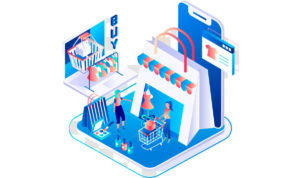By David Maisey, CEO of MultiPay Global Solutions
These are testing times for retailers. July’s ONS data found a drop in sales of 1.2% as a combination of wet weather and economic pressure saw consumers reduce their spending. Despite declining sales, retailers are also under pressure to lower prices. A few months ago, Jeremy Hunt, the UK Chancellor, threatened to bring in legislation that set price caps on essential items, forcing retailers to lower their prices in aid to help consumers. As many economists expect the current economic situation to remain in place for some time, short-term price cuts will not help consumers as much as the Chancellor may like.
Long-term unplanned price-cutting risks the financial security of retailers and producers, leading to even more problems for consumers as competition and choice disappear. The reality is that cutting prices can create a whole suite of issues for retailers and consumers alike. From increased inflation to unsustainable price wars and problems around customer experience (CX), price cuts do far more harm than good to retailers and consumers.
Instead of simply cutting prices to deliver short-term relief from the economic situation, retailers must adopt changes that create operational savings that can be passed on to consumers. Making operational savings allows businesses to maintain profitability while helping consumers during economic hardship. Here are some of the areas retailers can focus on to reduce operating costs:
Reducing waste
Reducing waste is a great way to lower operational costs. Getting on top of waste management and reducing what is thrown away creates efficiency improvements that can be passed on to customers through lower prices. A great example of this in practice is Wasteless. This tech company combines AI and dynamic pricing to help grocery businesses reduce food waste. Using AI to monitor when products are approaching their use-by date, Wasteless automatically lowers the price of perishable products that otherwise have a high chance of being thrown away.
At MultiPay, we’ve also worked with a leading pan-European fashion retailer to eliminate single-use plastic from their gift cards. By using NFC technology, we helped created a range of reusable gift keychains that can be topped up time and again with credit. As a rechargeable alternative to single-use gift cards, the keychains combine fashion with convenience to ensure appeal to customers and a significant reduction in waste.
Supercharge supply chains
Supply chain optimisation is another area where operational savings can be created. Research from Easyship found that 79% of businesses increase revenues by optimising their supply chains. Adopting new approaches such as near sourcing, which aims to bring production facilities closer to the customer base or developing digital twins for warehouses can help increase efficiencies further while also boosting supply chain resilience.
Superior CX
Customer churn is a hugely expensive issue for retailers. For ecommerce retailers, having competitors just a click away makes CX even more critical. Attracting new customers is a costly process. If it is only adding new customers to account for those that have been lost, then the business isn’t growing. Retaining customers is, therefore, critical to a business’s success and long-term health. To prevent customers from leaving or looking elsewhere,
retailers must enhance CX continuously. Using automation to speed up and improve areas like customer service can considerably boost CX and improve operational efficiencies. Simplifying returns and refunds is another area that can deliver a massive ROI for online retailers.
Fighting fraud
According to Juniper Research, payment fraud will cost online businesses over $48 billion in 2023. ECommerce businesses must factor this enormous amount of money into their pricing. Consequently, reducing fraud will create significant cost savings for retailers that can be passed on to shoppers via lower prices. Moreover, reducing fraud can also boost CX, as improved fraud prevention checks at checkout mean customers making legitimate purchases can be processed faster and more efficiently. In addition, companies like Luxochain are using the power of blockchain technology to lower losses from counterfeiting products too, further helping retailers reduce their operational costs.
Switch to Alternative Payment Methods
Fraud is not the only aspect of payments that can be improved. The latest additions to consumer payments – alternative payment methods (APMs) – offer many advantages to shoppers and retailers. Popular APMs like Buy Now Pay Later (BNPL) have risen to become a much sought-after payment method by consumers. Now, newer APMs are arriving that have reduced transaction fees for retailers. Offering bank-to-bank transfers as a payment option at checkout, these new payment methods have significantly lower transaction fees. Retailers can then pass these savings on to customers via enhanced loyalty programmes or by applying a discount at checkout.
The days of price cutting are numbered. While it may deliver short-term relief, it does more harm than good for online retailers and consumers in the long term. However, that does not mean the need to help customers through a challenging economic environment has disappeared. Instead, ecommerce retailers should use the need to help consumers to create new operational efficiencies. Reducing waste, improving supply chains, improving CX, reducing fraud, and switching to APMs allow retailers to lower prices sustainably without jeopardising their future. Making changes now helps customers through a particularly challenging time and lays the foundations for a stronger, more sustainable future.









